Chuck Jones &Frame Grabs &Layout & Design 21 Jul 2009 07:13 am
McGrew’s Aristocat
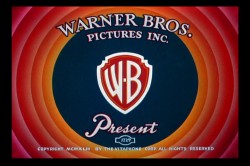 – John McGrew is certainly one of my favorite LO and Background designers in animation. His Dover Boys work in 1942 set new goals for the remainder of 20th Century animation. He followed it with the daring work of Conrad the Sailor, Inki and the Minah Bird, The Case of the Missing Hare and others all for Chuck Jones, who was no slouch, himself, in encouraging exciting innovation in design and film cutting.
– John McGrew is certainly one of my favorite LO and Background designers in animation. His Dover Boys work in 1942 set new goals for the remainder of 20th Century animation. He followed it with the daring work of Conrad the Sailor, Inki and the Minah Bird, The Case of the Missing Hare and others all for Chuck Jones, who was no slouch, himself, in encouraging exciting innovation in design and film cutting.
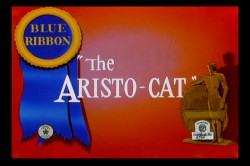 The Aristo-cat was probably the first of McGrew’s works that I saw when I was a kid. It made my eyes pop, even though I watched it originally in B&W. The dynamic design of wallpaper decoration combined with outrageous pans and camera work took me by force. The violently repeating patterns reach to the forefront of this short. All of this exuberant design completely acted to support the character’s state of mind. Anxiety, fear and terror jumped from the backgrounds to the fine character animation of Ken Harris, Rudy Larriva and Bobe Cannon.
The Aristo-cat was probably the first of McGrew’s works that I saw when I was a kid. It made my eyes pop, even though I watched it originally in B&W. The dynamic design of wallpaper decoration combined with outrageous pans and camera work took me by force. The violently repeating patterns reach to the forefront of this short. All of this exuberant design completely acted to support the character’s state of mind. Anxiety, fear and terror jumped from the backgrounds to the fine character animation of Ken Harris, Rudy Larriva and Bobe Cannon.
Working with Jones and painter Gene Fleury, he surefootedly set the way for UPA and all the others that followed. Toot Whistle Plunk & Boom and Ward Kimball’s other Disney TV work, Maurice Noble and other thinking designers of the Fifties couldn’t have broken through if McGrew hadn’t been there first supporting and pushing Chuck Jones.
Go here for Mike Barrier‘s excellent interview with him.
I’ve done some Bg recreations from the film, which meant assembling some exceptionally long pans that twist and turn. Unfortunately, I don’t think there’s a good quality copy of the film available. All of the grain in the DVD leads me to believe they copied a 16mm print.
As stills, they don’t come across as quite so daring, but they are within the moving short. It took some courage to do such work and enormous talent to be able to pull it off so successfully.
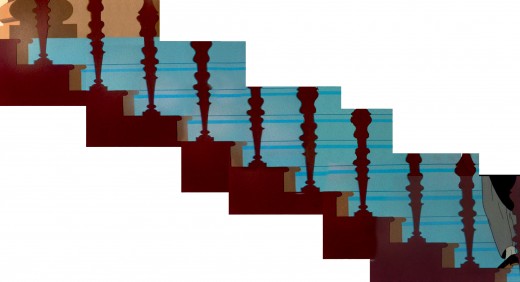
The butler walks upstairs.
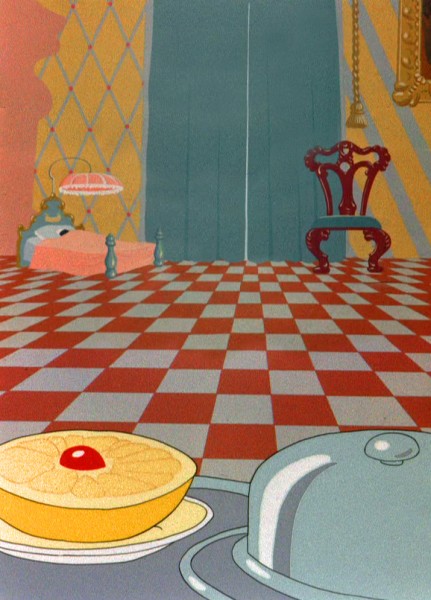
He carries a breakfast tray into the bedroom.
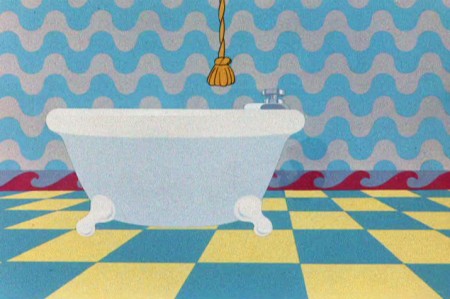
Releasing a bar of soap to trip the butler.
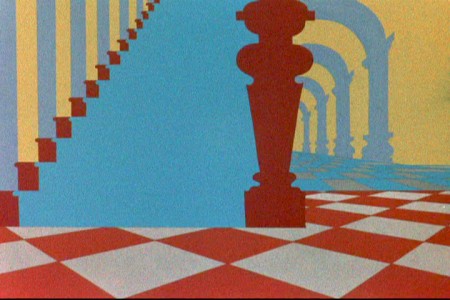
Downstairs to find the butler.
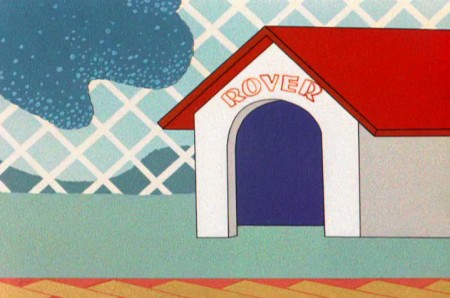
The dog in the doghouse. Repeated diamonds outside.
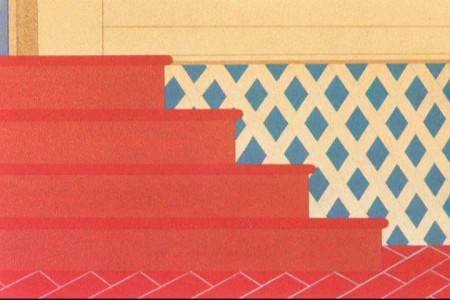
Back indoors. Still more diamonds.
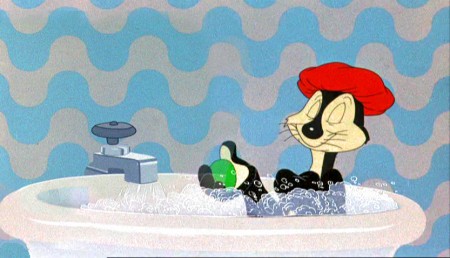


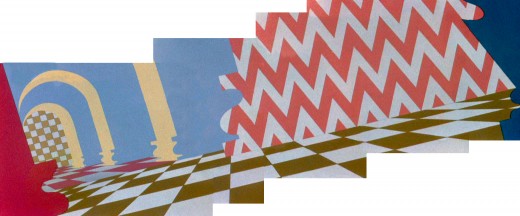
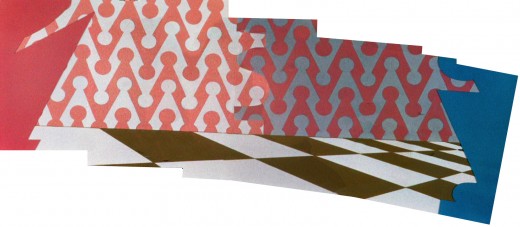
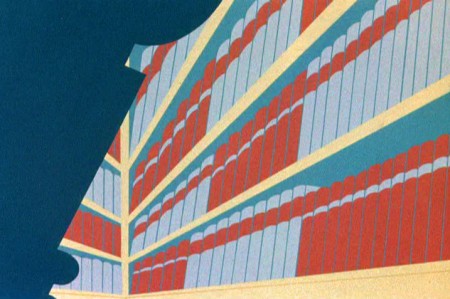
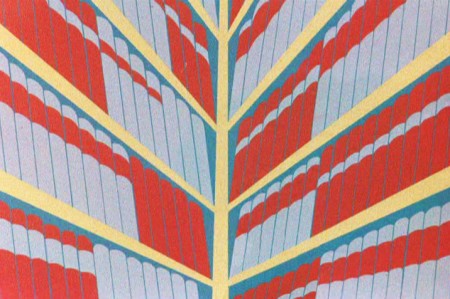

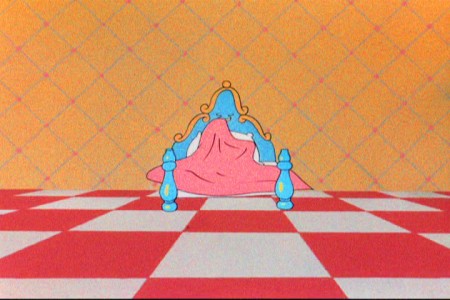
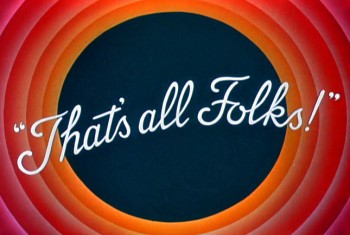

on 21 Jul 2009 at 7:26 am 1.Pierre said …
Ooohhhh….thanks for the interview link and the images. I’m intrigued by the incredibly limited color palette as well as the design. Interestingly, I just picked up Cartoon Modern to read again and find it all incredibly inspiring!
on 21 Jul 2009 at 8:58 am 2.Didier Ghez said …
FYI: A book in French about McGrew was published by Dreamland about 10 years ago in Paris.
on 21 Jul 2009 at 9:10 am 3.Michael said …
Thanks, Didier, I have the book. It’s called John McGrew, Un Génie ingénu by Edgar Decherze. I’ll probably post some of the illustrations from the book in the future.
on 21 Jul 2009 at 10:51 am 4.Jason said …
Beautiful stuff. Thanks Michael!
on 21 Jul 2009 at 2:45 pm 5.Steve Segal said …
Chuck Jones and Martha Sigall talk about this film and Dover Boys in the excellent documentary Extremes and Inbetweens. Jones explains how the BGs were designed to show the cat’s increasing dementia. Thanks for posting.
on 21 Jul 2009 at 3:36 pm 6.Larry Levine said …
The backgrounds in this cartoon are brilliant!! Chuck Jones was never afraid to experiment with design, it’s a shame he only worked with McGrew a few times.
on 21 Jul 2009 at 3:45 pm 7.willy hartland said …
Beautiful…. reminds me of Matisse cut-outs!
on 21 Jul 2009 at 4:56 pm 8.John said …
I’ve always loved the design patters on the floors, which almost have a 3-D quality in seeming to be coming right at you out of the screen.
(As for the grain in the DVD, they were working with a Blue Ribbon print, and at least a few of the Golden Collection source materials seem to have been tweaked versions of the already-tweaked “dubbed versions” Turner Entertainment did on the pre-1948 Warners cartoons just before the Time-Warner merger. So the prints are color-corrected, but not from original source negatives.)
on 22 Jul 2009 at 9:41 pm 9.Bill Perkins said …
Hi Michael. Your blog entries are also superlative but this is one is truly great. It must have taken a bit of work to do these screen grabs and present them this way but being able to study them as still graphics, as your post allows, is really a pleasure. Certainly McGrew was ahead of his time and like you say he set the stage for a lot that followed. My particular area of interest within animation has always laid in the design end of things and too that end I recently I purchased a book that Amid brought attention too a few months ago on the Cartoon Brew site. It’s called “The Whimsical Works of David Weidman And Also Some Serious Ones” Weidman, as you may know, worked in animation during the fifties and Sixties including a stint with John Hubley on “Finian’s Rainbow”. This book has some of his work in Animation and as well page after page of serigraphs he’s created and sold over the years. I think you’d like it, certainly a strong Ben Shahn influence. If you have time look him up on the web. Great stuff.
on 23 Jul 2009 at 7:21 am 10.Michael said …
Bill, just today someone else, Jonathan Annand, had told me about the book. I’ll have to look into it and get it. Thanks for the info.
on 08 Mar 2011 at 2:05 pm 11.gonnet andré said …
Do you know that there is a small museum of John McGrew in france? the adress is “place de l’ancienne église,69620, Le Bois d’Oingt” tél. 0474717295 .It is near Lyon.
you may be surprised because animated cartoons was but a small episode in his long life. He was a philosopher and a very objective and pragmatic searcher in spirituality and esoterism and HE WAS A PAINTER AND AN EXTREMELY SKILLFUL AND BRILLIANTLY ORIGINAL ONE and he should be known for those two reasons much more than for the animated cartoons, for which he did not care very much. For him animated cartoons were just a fascinating first job to which he brought skill and inventiveness as was his custom, all his life long, in every activity where he invested his life. He is buried in Le Bois D’Oingt.